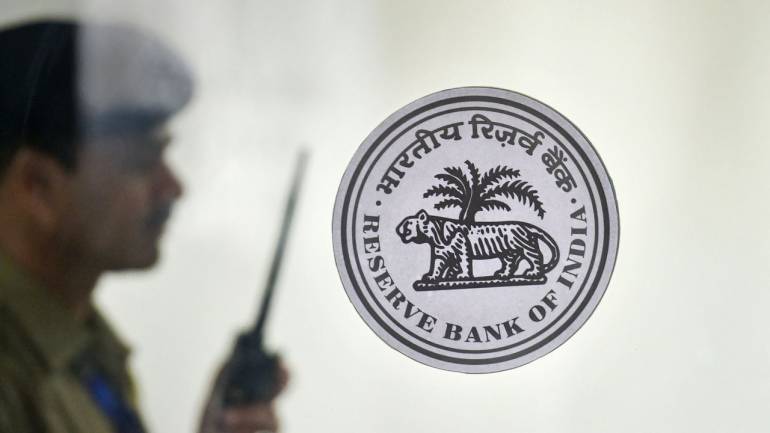Equity market will find it increasingly difficult to justify its current valuation
Highlights:
- RBI delivers on a 25 bps rate cut, on expected lines- The apex bank highlights growth concerns
- Accommodative stance leaves room for more rate cuts
- Growth revival now hinges on fiscal policy
- Little headroom for expansionary fiscal policy
- In the absence of growth, markets might find it difficult to defend current valuation
Growth has decisively hit a slow lane and inflation remains benign. Against this backdrop, the rate cut of 25 basis points by the Monetary Policy Committee was entirely predictable.But contrary to the expectations of optimists on the Street, RBI has shied away from decisive “heavy lifting” -- a more aggressive rate cut -- to take the economy out of the deep rut it is in.
RBI’s take on the macro
The central bank expects inflation to remain benign although it alluded to risks emanating from uncertainties relating to the monsoon, unseasonal spikes in vegetable prices, international fuel prices, geo-political tensions, financial market volatility and the fiscal scenario.
While the outcome of the monsoon remains uncertain, given the current weak El Niño and neutral Indian Ocean Dipole (IOD) conditions turning positive in the middle of the monsoon season, which is not negative.
The forecast for most commodities looks benign in light of the lower global growth expectations due to the ongoing trade tensions. So, the real joker in the inflation pack could be the fiscal picture that is likely to the come out from the Union Budget to be presented on July 5.
Given the weak transmission of rate cuts in the past and the structural issues that thwart a smooth transmission of rates (such as slower deposit growth, falling household savings, higher combined deficit etc.), the RBI not acting aggressively before clarity emerges on the fiscal side is a sign of prudence and is not totally a surprise. In fact, out of the 50 basis points rate cut in the past two policies, transmission has been to the tune of 21 basis points in new lending.
However, the growth concerns as highlighted by RBI cannot be overlooked. GDP growth for FY19 at 6.8 percent is much lower than RBI’s last forecast of 7.4 percent, with Q4 FY19 growth coming in at a five-year low of 5.8 percent. In fact, the central bank has now revised down the growth forecast for FY20 to 7 percent, from 7.2 percent.
So, where does this leave the market?
Markets have had a very decent rally, partly on hopes that the RBI would deliver a strong monetary stimulus. Post exit poll till yesterday, the Nifty has rallied by close to 5.5 percent amid weak macro data and subdued corporate earnings, riding solely on expectations from the new government.
The moot question remains: Will the political stability ensure a quick recovery from the slowdown?
We have time and again highlighted that there is no easy recipe to come out of the current state unless the government jettisons the fiscal consolidation framework and resorts to massive spending.
But having exercised prudence on the monetary side, it is likely that the government will exercise restraint on the fiscal side as well, stick to the fiscal consolidation road map and won't do much to pump prime the economy. It is important to remember that given the significant tax shortfall, sticking to the fiscal deficit target of 3.4 percent of GDP in FY20 itself will be a tall task.
Interestingly, the RBI Governor also expects the fiscal road map to be adhered to by the government.
Against a weak global backdrop, exporting our way to growth is unlikely unless there is a steep currency depreciation. That leaves the burden of growth on the consumption engine.
Prima facie, the Budget might attempt to revive consumption. Moderate fiscal sops to keep the consumption engine going – continuation of schemes like PM Kisan for the bottom of the pyramid, tax sops for the middle class and corporate tax rationalisation – are some of the efforts that can be expected in the near term.
An investment revival may have to wait for longer except for some government-related orders that could restart, post elections. Infrastructure investment from the private sector looks like a distant dream in light of the fractured balance sheet of most private players.
Expect the government to announce bold intentions of creating infrastructure. But in the absence of fiscal headroom, it will be targeted at a few pockets – affordable housing, roads and the like – sectors typically with high linkages.
Seen in this context, the equity market will find it increasingly difficult to justify its current valuation 20 times FY20 estimated earnings. The past 5-year (FY14 to FY19) earnings CAGR (compounded annual growth rate) was a paltry 3.5 percent.
While expected earnings growth for FY20 in the mid-twenties looks promising, it is largely driven by a handful of corporate lenders. For a broad-based earnings recovery, the economy has to start firing.
With RBI not decisively taking the growth-revival responsibility on itself, all eyes will be on Sitharaman to deliver a “dream budget”. Else, the bulls will increasingly find it difficult to justify the dream run.















